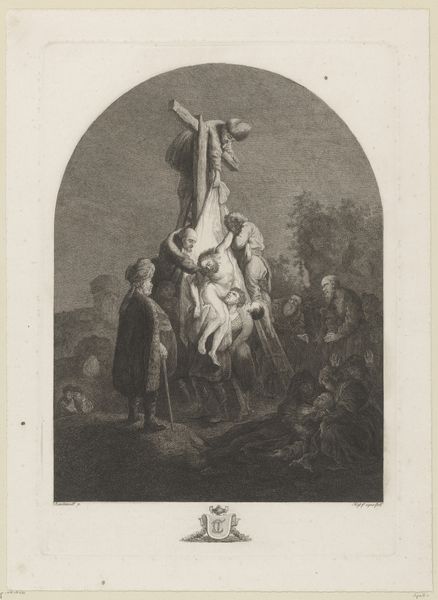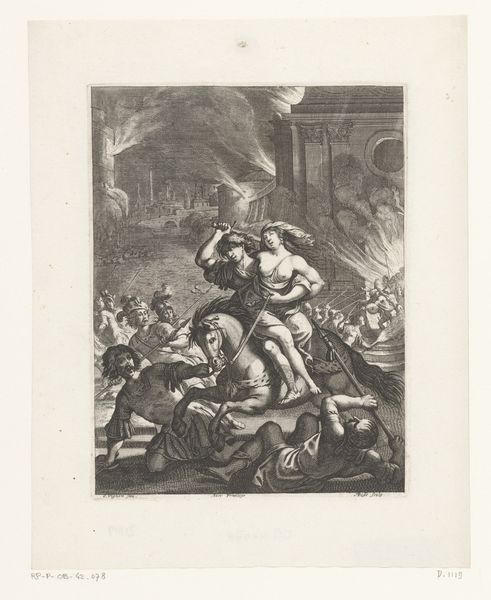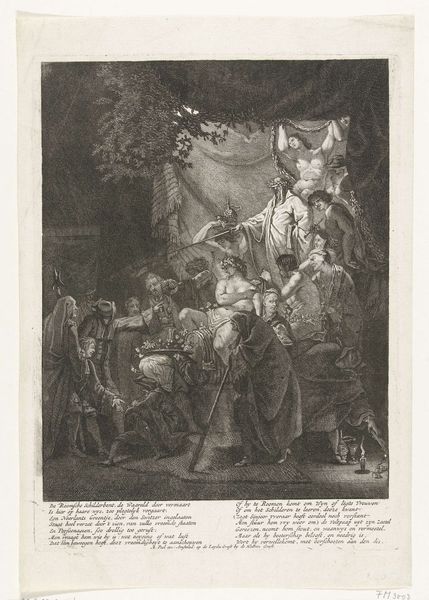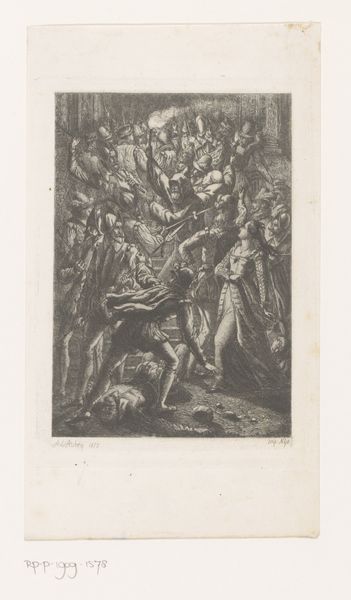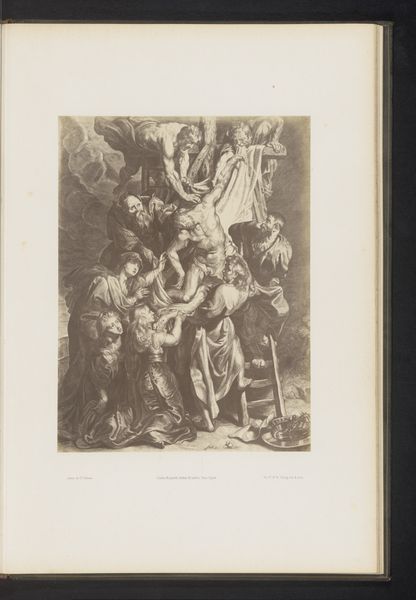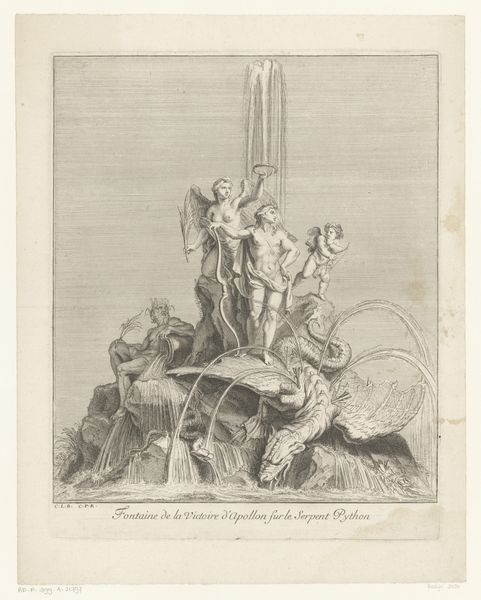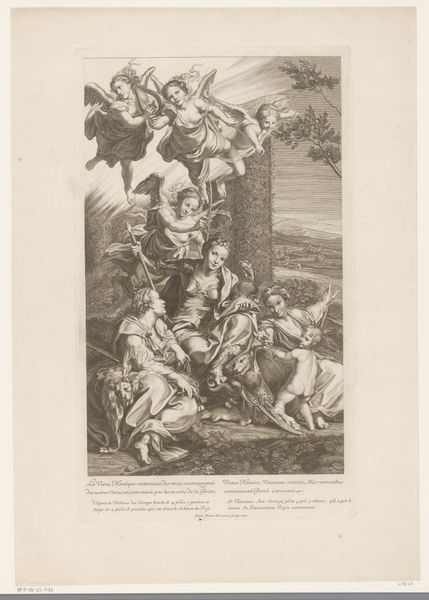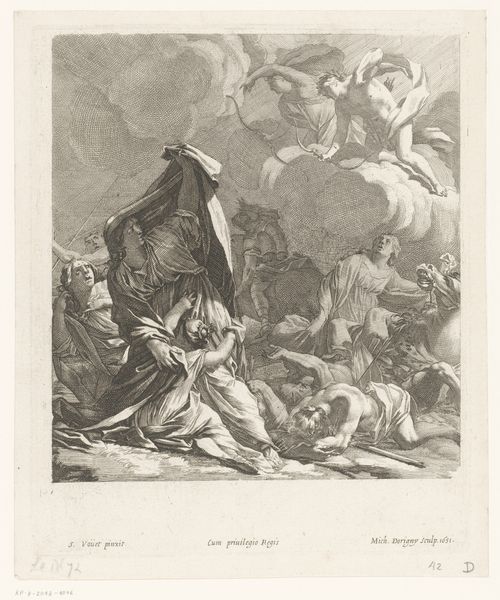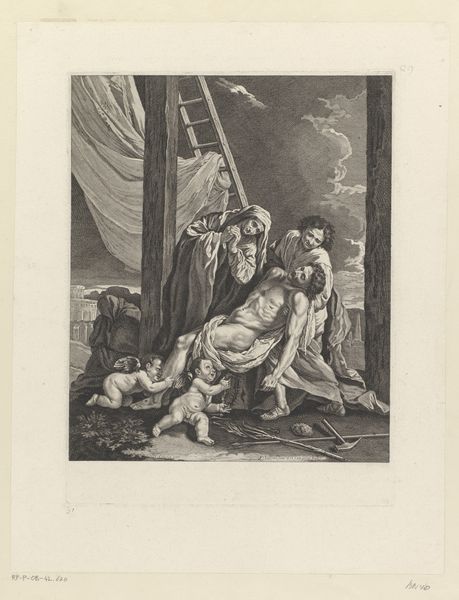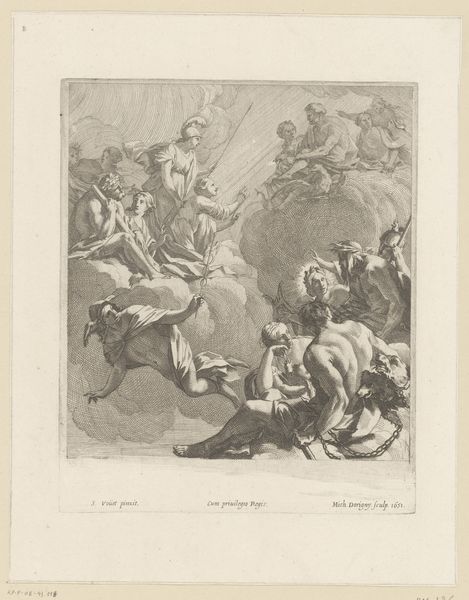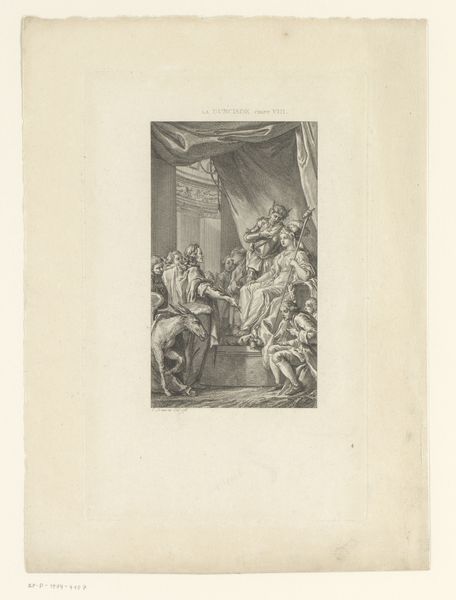
drawing, print, etching, engraving
#
drawing
#
narrative-art
# print
#
etching
#
pencil sketch
#
charcoal drawing
#
figuration
#
charcoal art
#
pencil drawing
#
line
#
history-painting
#
academic-art
#
charcoal
#
engraving
Dimensions: height 340 mm, width 237 mm
Copyright: Rijks Museum: Open Domain
Editor: We're looking at "The Raising of the Cross," an etching by Carl Ernst Christoph Hess, likely created between 1765 and 1828. It depicts the crucifixion, and what strikes me is how the figures seem to struggle under the weight of the cross, highlighting physical exertion. What is your take on this piece? Curator: This work is particularly compelling when viewed through the lens of power dynamics and resistance. Consider the historical context: engravings like these were often commissioned by those in power to reinforce the dominant ideology. But look closer—does Hess fully glorify the event? The struggling figures, as you noted, introduce an element of physical suffering and perhaps even resistance to the imposed will. Editor: Resistance to the imposed will? How so? Curator: Well, isn't there a subtle commentary on the violence inherent in the act itself? The composition invites us to consider who benefits from this spectacle and who suffers. Notice the diverse reactions of the surrounding figures: indifference, sorrow, maybe even a hint of doubt. What narratives are included, and which are conspicuously absent? Whose stories aren't being told? Editor: I see your point! I was so focused on the immediate scene I hadn't considered the broader power structures. The expressions are quite subtle. Curator: Precisely! And thinking about contemporary theory, we might consider the parallels to systemic injustices that continue today. How does Hess’s depiction of this historical event speak to present-day struggles against oppression? It forces us to think about the cyclical nature of violence and the enduring fight for liberation. Editor: This gives me so much to think about! I originally just saw a historical scene, but now I see it has a very compelling statement. Curator: Exactly! It reminds us that art is never truly neutral; it is always engaged in a conversation with its time. And hopefully can provoke action.
Comments
No comments
Be the first to comment and join the conversation on the ultimate creative platform.
